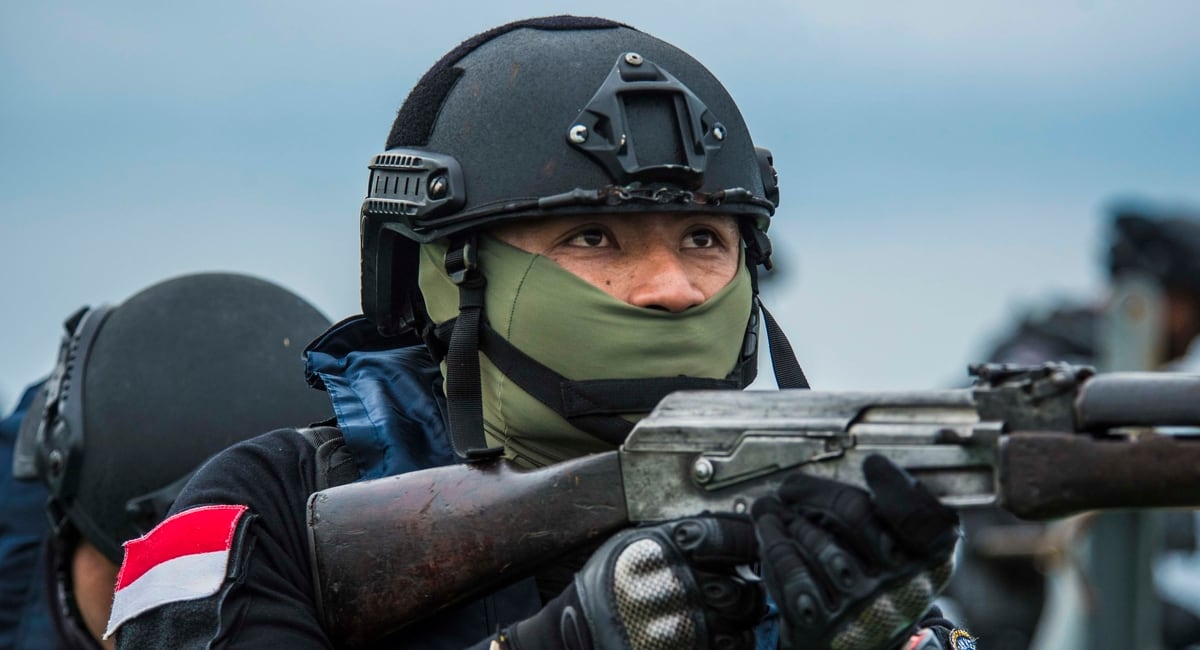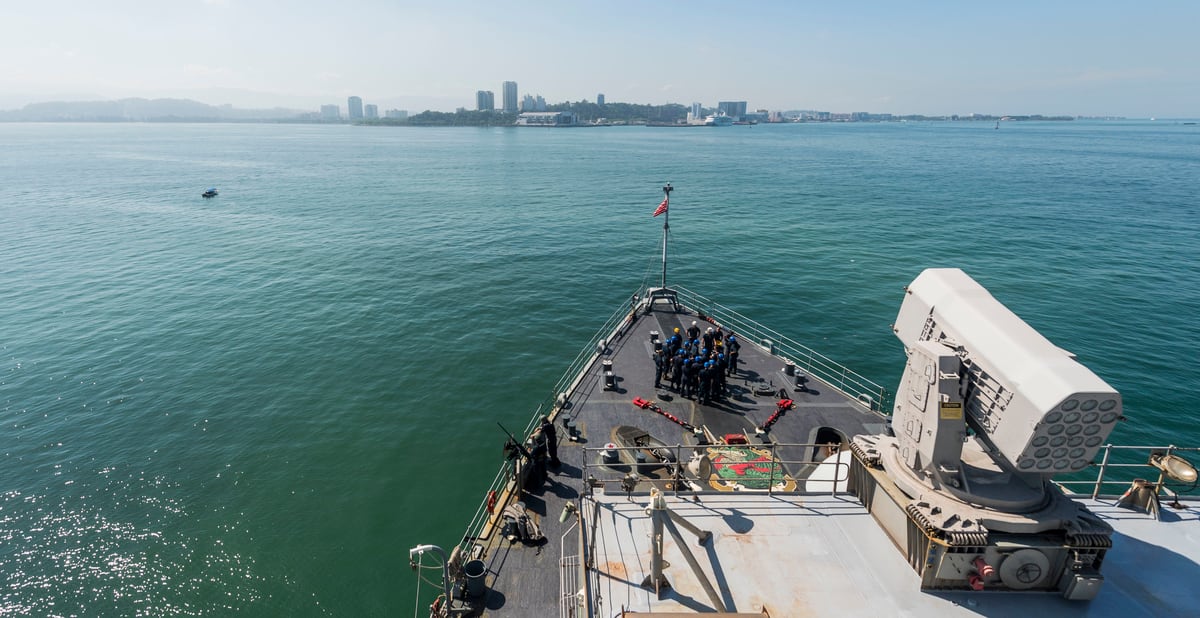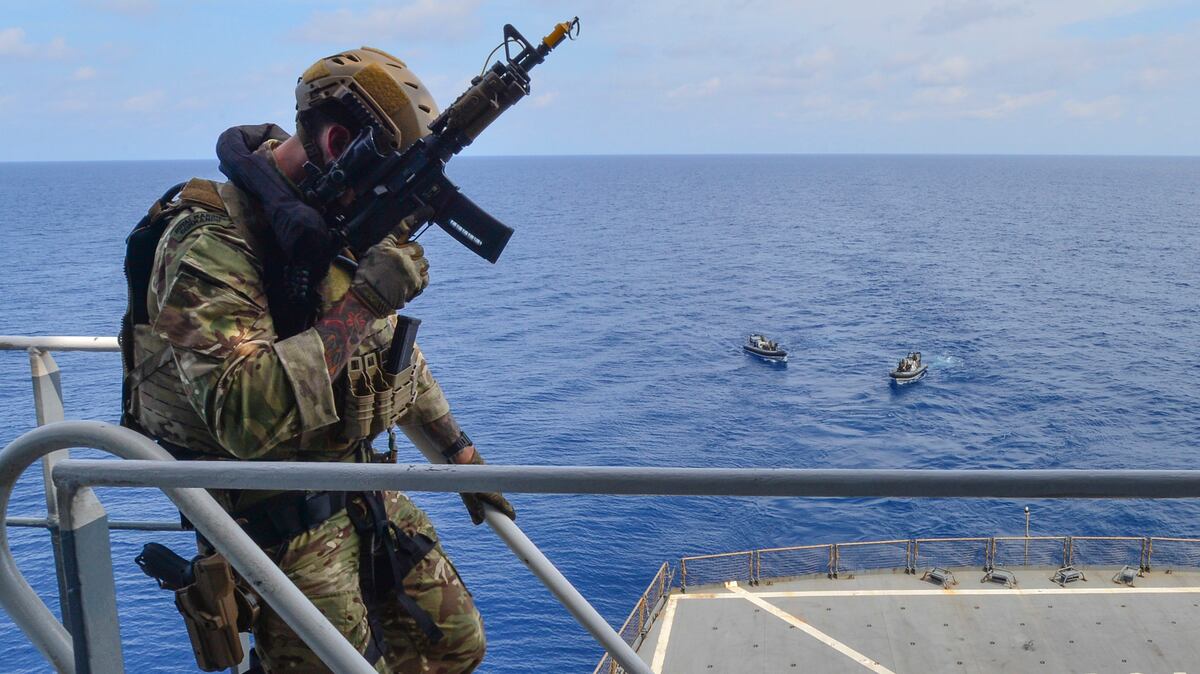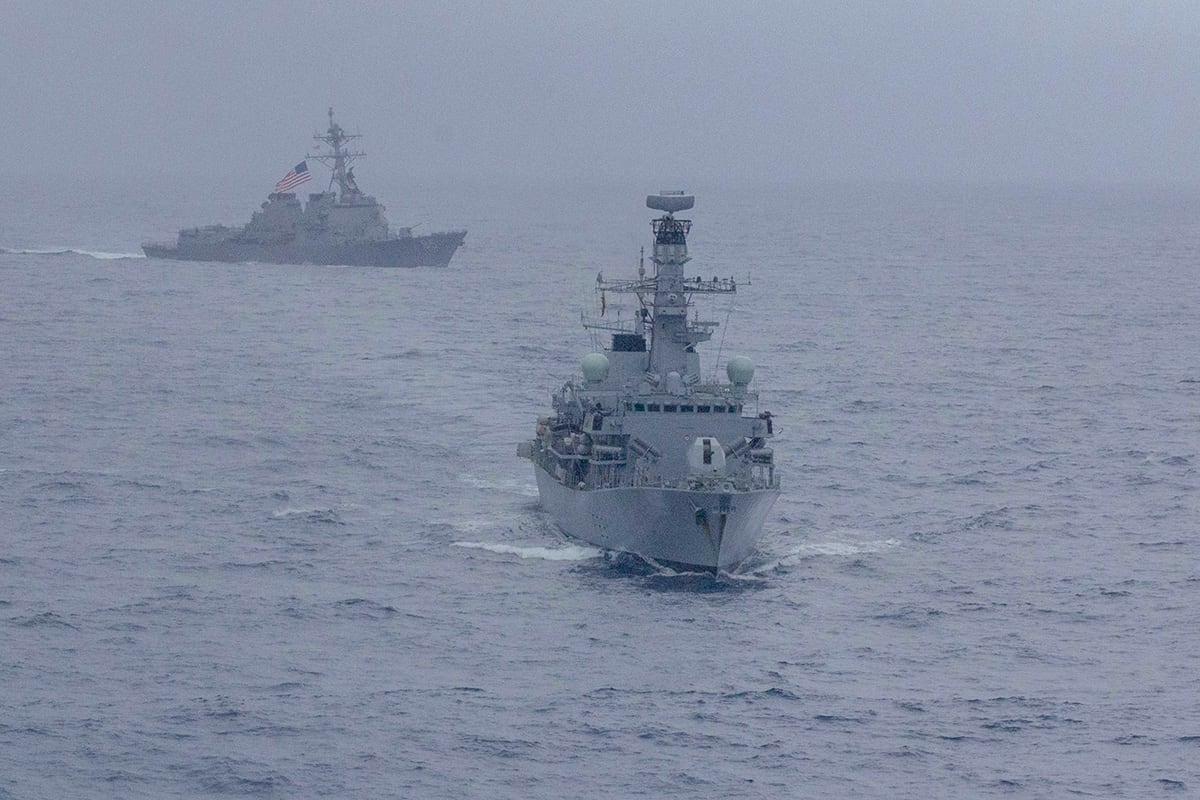BEIJING — Even before the U.S. Navy’s guided-missile destroyer Stethem and the dry cargo ship Cesar Chavez sailed the Taiwan Strait on Monday and Tuesday, addling China, the region was simmering with tension.
That was especially true in the South China Sea, where Beijing is pitted against smaller neighbors in multiple disputes over islands, coral reefs and lagoons in waters crucial for global commerce and rich in fish and potential oil and gas reserves.
Here’s a survey of recent developments.

INDONESIA ANNOUNCES PLANS TO DEVELOP ISLAND FISHERIES
Indonesian reports say the country plans to develop fisheries surround the Natuna Islands it controls in a potential challenge to China's claims to resources in the South China Sea.
The Jakarta Post and others said Indonesian Coordinating Minister for Maritime Affairs Luhut Pandjaitan made the announcement Friday. The plan, due for implantation by year's end, would include deploying drones, satellites and refueling tankers to aid fishermen in making catches and the construction of cold storage facilities to enable them to get freshly caught fish to market.
Indonesia, the world's largest archipelago nation, is not a party to the six-government dispute over territory in the South China Sea, but has been taking measures in recent years to guard against encroachment on its resources by China and others. Ships caught operating illegally in Indonesian fishing grounds have been fired on, seized and destroyed. Most of the vessels were from Vietnam, the Philippines, Malaysia or Thailand.
Relations with Beijing are expected to be a major issue in April's presidential election. Although the government of President Joko Widodo has pursued billions in financing for infrastructure projects, the opposition points to a trade imbalance massively in China's favor as a sign of problems to come.
A section of Indonesia's exclusive economic zone that includes natural gas fields lies within China's "nine-dash line" delineating its claim to virtually the entire South China Sea. Chinese ships also regularly patrol off the island of Borneo and near James Shoal east of the Natuna islands, China's southernmost territorial claim which Malaysia says belongs to it.
The South China Sea accounts for more than 10 percent of the global fish catch and surrounding states have taken increasingly extreme measures to ensure they obtain their share. Stocks have declined drastically amid overfishing and the destruction of coral reefs, to the point that they may be on the verge of collapse, according to some studies.

U.S. AMPHIBIOUS ASSAULT SHIP PAYS CALL
The Navy said its amphibious assault ship Ashland arrived in Kota Kinabalu, Malaysia, on the South China Sea to “continue working to strengthen regional partnerships.”
The visit that began Saturday is part of a tradition of U.S. Navy ships working to “bolster security and to advance shared goals for Malaysians and people throughout the region, dating from the first visit by an American ship, the gunboat Bennington, to the island of Sabah in 1899,” the Navy said in a news release.
Although it is termed a "quality of life port visit," the stop in Kota Kinabalu is a reminder of the Navy's robust presence in the region despite China's objections. With its complement of 300 marines and sailors, the Ashland has been training in the U.S. 7th Fleet's Indo-Pacific area of operations.
"Ashland, part of the Wasp Amphibious Ready Group, with embarked 31st MEU, is operating in the Indo-Pacific region to enhance interoperability with partners and serve as a ready-response force for any type of contingency," the Navy said.
During the visit, crew members will visit a local high school and a nonprofit facility providing care for people with disabilities. Some will also hike to Mount Kinabalu, the highest peak in Southeast Asia.

U.S., BRITISH SHIPS CONDUCT MORE JOINT TRAINING
British sailors and marine commandos conducted joint training with the crew of an American replenishment ship last week, marking the third such joint exercise between the two forces in the last three months, the U.S. Navy said.
The sailors and marines from the Royal Navy frigate Montrose took part in maritime security and logistics training on Feb. 18, including a “visit, board, search and seizure scenario” aboard the Henry J. Kaiser-class underway replenishment oiler Guadalupe.
The Military Sealift Command-operated vessel was simulating a ship engaged in illegal trafficking.
They also practiced NATO procedures for replenishment-at-sea operations, showing they could transfer fuel while underway in a manner both safe and efficient, the Navy said.
“This was a valuable exercise for us, keeping our integrated Royal Navy and Royal Marines boarding team sharp and ready to deliver any mission assigned to them,” Cmdr. Conor O’Neill of the Montrose was quoted as saying in the Navy statement.
The success of the drill was “testament to the close working relationship between the Royal and United States Navies, both in the Pacific and globally,” O’Neill added.
RELATED

The two navies have lately stepped-up join operations amid growing concern over China’s muscle-flexing in the region.
The Arleigh Burke-class guided-missile destroyer McCampbell and Royal Navy frigate Argyll operated together in the South China Sea in January, and a trilateral anti-submarine warfare exercise was held Dec. 21-22 among the U.S. Navy, Royal Navy and Japan Maritime Self Defense Force.
A visit by British Defense Minister Gavin Williamson was reportedly scrapped earlier this month after China objected to remarks by Defense Secretary Gavin Williamson that Britain’s sole aircraft carrier, the Queen Elizabeth, would be deployed to the Pacific and that the U.K. was prepared to use “lethal” force to deter countries that “flout international law,” in what was seen as a reference to China.
The British navy has also sailed deliberately near Chinese island holdings in the South China Sea in “freedom of navigation” operations challenging Beijing’s maritime claims.





